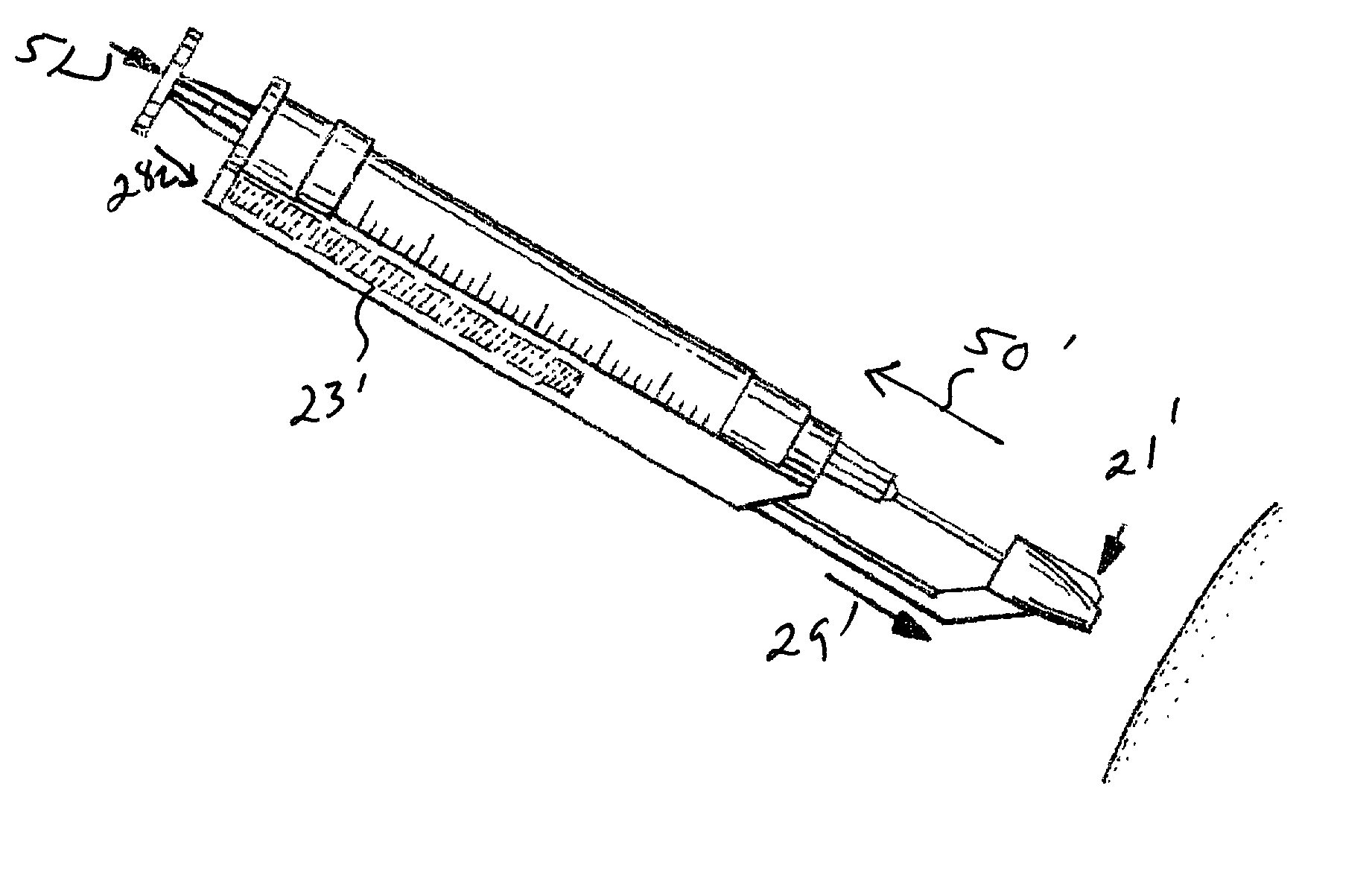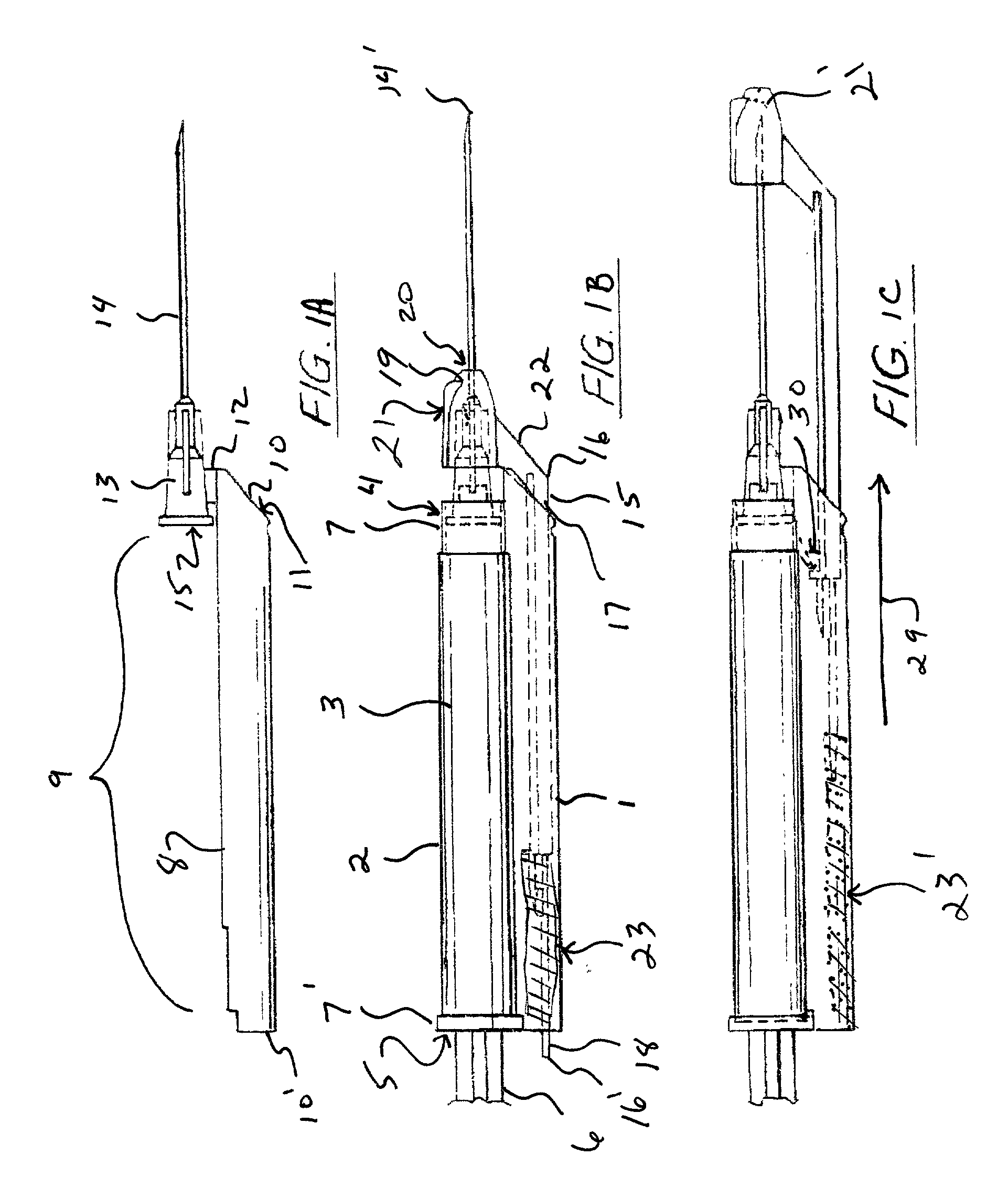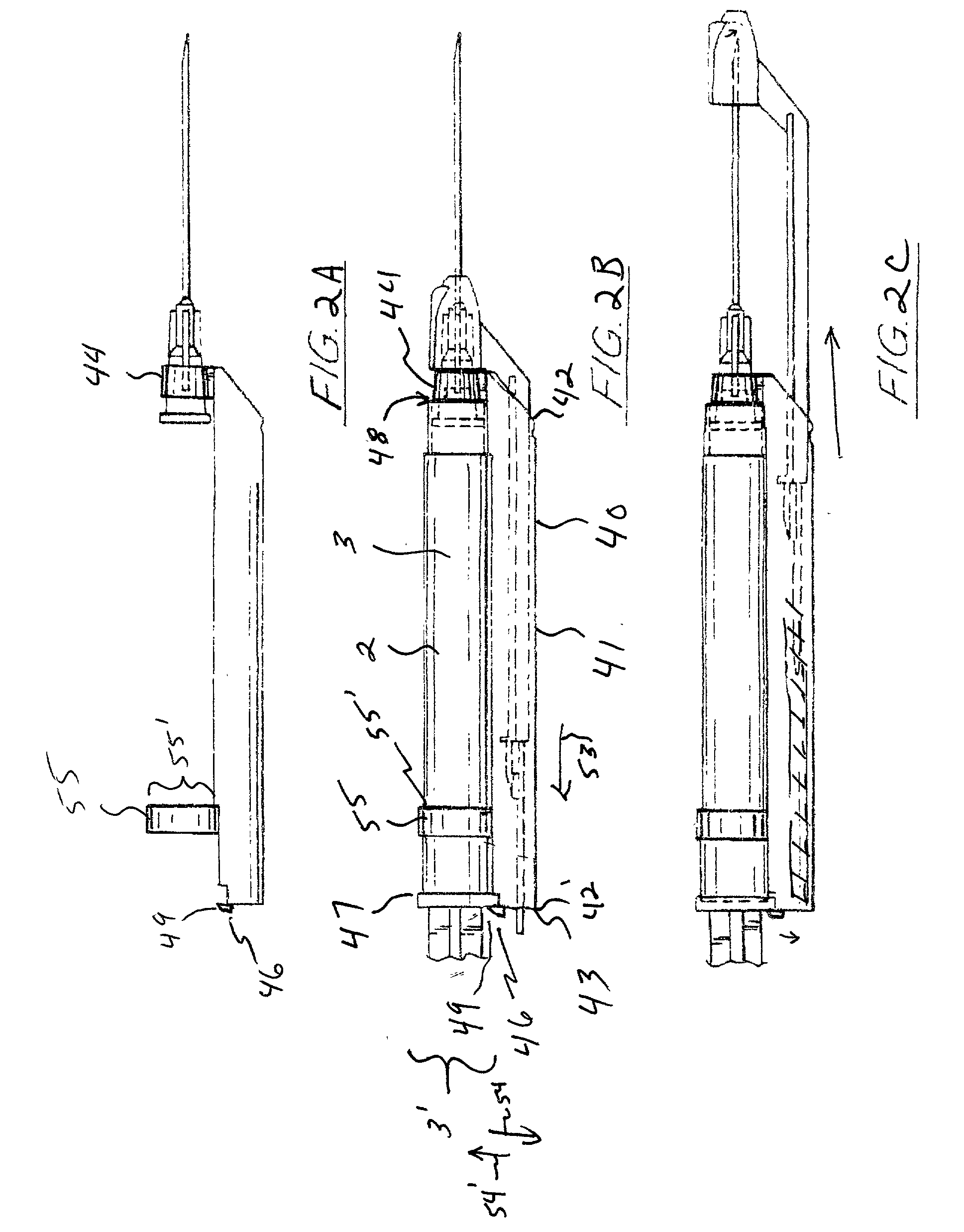Safety syringe system
a safety syringe and syringe technology, applied in the field of safety syringe systems, can solve the problems of not being able to identify particularly contaminated used syringes, lack of solid locking means, increasing the potential contamination risk simply by covering the needle, etc., to achieve reliable operation, effective use, and low cost
- Summary
- Abstract
- Description
- Claims
- Application Information
AI Technical Summary
Benefits of technology
Problems solved by technology
Method used
Image
Examples
third embodiment
[0073] Continuing with FIGS. 6A and 6B, the present invention extends the activation tab and provides a cam 57 or taper on the tip so as to communicate with the thumb flange on the syringe plunger upon fully depressing the plunger so that, upon the administering of a fluid to a patient via the syringe, the plunger is depressed 59 to a point where the thumb flange 59' engages the flange 57, directing 60 the activation tab 56 to the triggering slot 61 so that the spring 62 within the housing 63 is able to then urge 64 the cover 65 over the needle tip.
fourth embodiment
[0074] FIG. 7 illustrates the present invention, where the plunger thumb flange 70 has a built-in cam 71 configured to engage the activation tab 72 to urge 73 the activation tab to the triggering slot 74 upon administering 75 the plunger.
[0075] FIGS. 10A-10B illustrate another variation of the self-actuating syringe concept, wherein the plunger flange 92 has emanating therefrom a angled activation member 93, configured to engage a cam 95 emanating from the activation piece 94 to urge 97 the activation piece for triggered activation 98' with the pressing 98 of the plunger, allowing bias to urge 99 the protective cover over the needle tip.
[0076] FIGS. 8A-8B and 9A-9B illustrate a fifth alternative embodiment of the present invention, wherein the housing 82 does not utilize a spring bias to drive the activation piece 83, instead relying upon manual activation by the user wherein the housing has formed therethrough a longitudinal slot 81 along its length to accommodate the passage of an...
PUM
 Login to View More
Login to View More Abstract
Description
Claims
Application Information
 Login to View More
Login to View More - R&D
- Intellectual Property
- Life Sciences
- Materials
- Tech Scout
- Unparalleled Data Quality
- Higher Quality Content
- 60% Fewer Hallucinations
Browse by: Latest US Patents, China's latest patents, Technical Efficacy Thesaurus, Application Domain, Technology Topic, Popular Technical Reports.
© 2025 PatSnap. All rights reserved.Legal|Privacy policy|Modern Slavery Act Transparency Statement|Sitemap|About US| Contact US: help@patsnap.com



